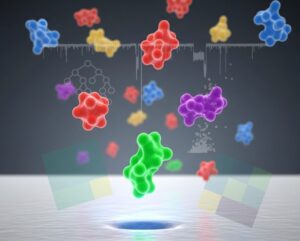
Millions of coral larvae on the Great Barrier Reef are poised for a brighter future thanks to the innovative ‘larval seedbox’ technology. Developed by CSIRO, Australia’s national science agency, in collaboration with Southern Cross University, this breakthrough aims to replenish degraded reefs with unprecedented efficiency.
Initial trials of the larval seedboxes have shown remarkable results, with coral settlement rates increasing up to 56 times across vast areas of the reef. Conducted at Lizard Island in 2024, these trials highlight the potential of seedboxes to significantly scale up coral restoration efforts.
Promising Results from Initial Trials
The timing of this development coincides with the annual mass coral spawning event on the Great Barrier Reef each November. A second trial is currently underway in the Whitsundays, offering a crucial opportunity to test the seedbox technology under diverse environmental conditions.
Larval seedboxes function by delaying the dispersal of concentrated coral larvae in specific areas of the reef that require restoration. According to Dr. Christopher Doropoulos, Senior Research Scientist at CSIRO, the seedbox is a “simple, efficient, and cost-effective tool” designed to enhance coral larval survival and settlement.
“The seedboxes work as a delivery system, allowing coral larvae more time to disperse and settle on the Great Barrier Reef, where they can establish themselves and grow into juvenile corals,” said Dr. Doropoulos.
Mechanics of the Larval Seedbox
The process begins with the culturing of coral larvae following the coral spawning event, during which various coral species release eggs and sperm into the water for external fertilization. This method enables the collection of tens of millions of coral larvae, which are then placed into the larval seedboxes.
Once deployed onto the reef, the larvae exit the seedboxes when ready, drifting with ocean currents to cover expansive areas—over two hectares of reef. This strategy ensures a high density of larvae over larger areas than previously possible, significantly boosting coral restoration potential.
Testing in Varied Conditions
Professor Peter Harrison from Southern Cross University emphasizes the importance of testing the technique across different reef conditions. “We’re deploying the seedboxes in the Whitsundays to target areas of reef that have been previously impacted by extreme weather events and coral bleaching from warming seas,” he explained.
“We’re anticipating the release of up to 20 million larvae at multiple locations, and the team will continue to monitor the longer-term effectiveness of the larval seedbox delivery over nine to 12 months,” said Professor Harrison.
Future Implications and Potential
Following the assessment period, researchers aim to determine the feasibility of using larval seedboxes for large-scale coral restoration across various environmental conditions. Anna Marsden, Managing Director at the Great Barrier Reef Foundation, sees this technology as a vital component of future reef restoration strategies.
“This work is building new ways to help coral ecosystems adapt in a changing climate. This trial is possible thanks to support from Qantas, which is helping turn ideas into impact,” Marsden stated.
This research represents a collaborative effort involving CSIRO, Southern Cross University, the Great Barrier Reef Foundation, the Australian Institute of Marine Science, and local stakeholders. The findings from the first trial at Lizard Island will be published in the journal Ecological Applications, offering further insights into the success and scalability of the larval seedbox technology.
As the world grapples with the impacts of climate change on marine ecosystems, innovations like the larval seedbox offer a beacon of hope for the preservation and restoration of coral reefs worldwide.







